Imagine standing on the Great Wall of China, where history stretches as far as the eye can see. From modern cities like Shanghai to ancient wonders like the Terracotta Army, China is a blend of the old and the new, a country that will leave you in awe at every turn.
Welcome to our guide on the 15 best places to visit in China! Whether you’re into history, nature, or food, China has something for everyone. And for those who love photography, the country is a treasure trove of picture-perfect spots.
This guide will take you through China’s must-see landmarks and hidden gems. We’ll explore everything from bustling markets to tranquil temples, giving tips to make the most of your trip.
So why visit China? It’s not just about its rich history; it’s also a land of stunning natural beauty. From the mystical landscapes of Zhangjiajie to the spiritual heights of Tibet, China offers a diverse range of unforgettable experiences.
Ready for an adventure? Let’s dive into the heart of China and discover the must-visit places that will make your trip extraordinary.
The Must-Visit Places in China
China is an enormous country with a rich cultural heritage and many must-visit places. Here are some of the top destinations you shouldn’t miss when exploring China:
The Great Wall of China
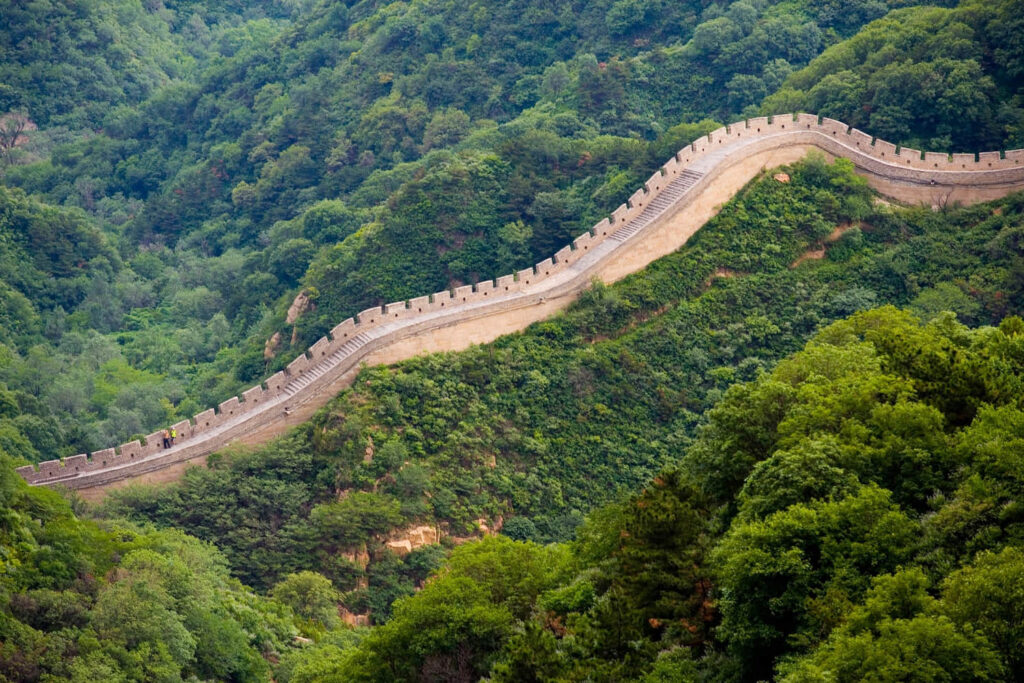
Let’s kick off our journey with one of the most iconic landmarks in China and the entire world—the Great Wall. Stretching over 13,000 miles, this monumental feat of engineering is often visible from space. But trust us, it’s much more impressive up close.
Why should you visit? First off, the history is captivating. Built over several dynasties, the Great Wall was primarily designed to protect China from invasions. Each brick and stone tells a story of struggle, triumph, and ingenuity.
But it’s not just a history lesson; the Great Wall offers some of the most breathtaking views ever. Whether you visit the well-preserved sections like Badaling or the more rustic and less crowded areas like Jinshanling, the panoramic vistas are a photographer’s dream.
And for the adventurers among us, how about a hike? The wall meanders through mountains, deserts, and grasslands, offering a challenging yet rewarding trekking experience.
So, whether you’re a history enthusiast, a photography buff, or an adventure seeker, the Great Wall of China is a must-visit landmark that offers something for everyone.
Forbidden City, Beijing
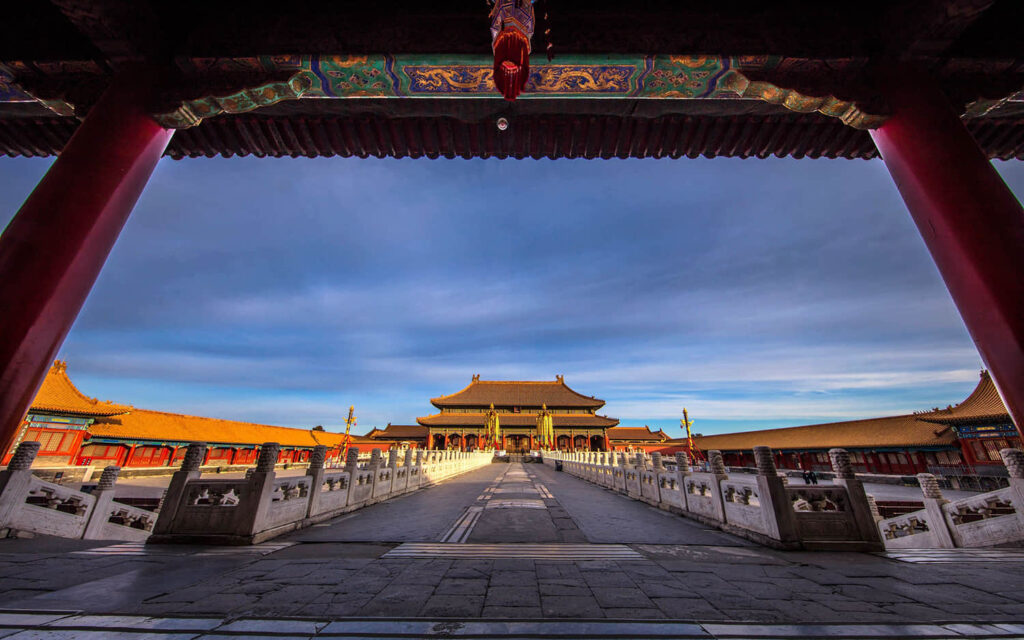
Next up on our list is the Forbidden City, right in the heart of Beijing. If the Great Wall is China’s most iconic landmark, then the Forbidden City is its cultural soul. This massive palace complex was home to Chinese emperors for nearly 500 years and is a history and architecture treasure trove.
Why should you visit? For starters, the Forbidden City is like a real-life history book. As you walk through its grand halls and intricate courtyards, you’ll be transported back to the days of imperial China. The architecture alone is awe-inspiring, with its golden roofs, red walls, and intricate wooden carvings.
But there’s more than just eye-catching architecture. The Forbidden City is also home to an extensive collection of artwork and artifacts. From ancient ceramics to imperial robes, you’ll see China’s rich cultural heritage firsthand.
And let’s not forget its strategic location. Other historical sites surround the Forbidden City, including Tiananmen Square and the Temple of Heaven. It’s like hitting multiple birds with one stone!
Temple of Heaven, Beijing
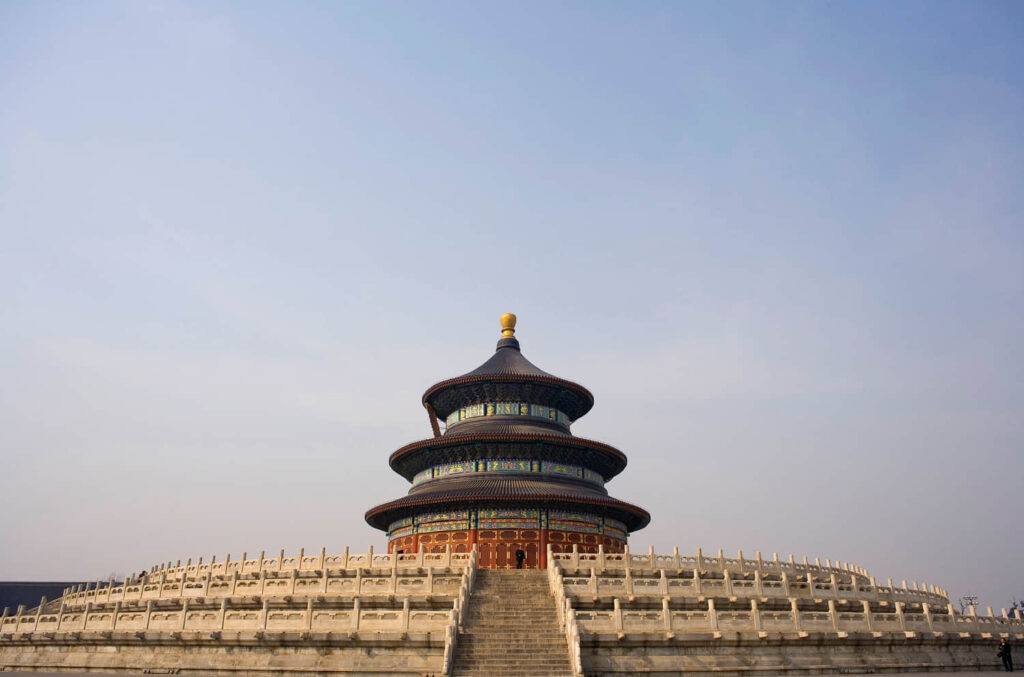
After exploring the grandeur of the Forbidden City, let’s head to another masterpiece just a short drive away—the Temple of Heaven. This iconic site is more than just a temple; it symbolizes China’s rich spiritual and architectural heritage.
Why visit the Temple of Heaven? First and foremost, it’s an architectural marvel. The temple’s design blends intricate details and grand scale, with its circular shape representing Heaven and the square base symbolizing Earth. The Hall of Prayer for Good Harvests, with its triple-gabled circular roof, is a sight to behold.
But it’s not just about the architecture. The Temple of Heaven was a significant place for ancient Chinese emperors, who came here to pray for good harvests and seek divine clearance. Walking through the temple grounds, you’ll feel the weight of centuries of spiritual rituals.
And don’t miss the surrounding park. It’s a local hotspot for morning Tai Chi sessions, traditional music, and even some ballroom dancing. It’s a perfect glimpse into Beijing’s daily life.
West Lake, Hangzhou
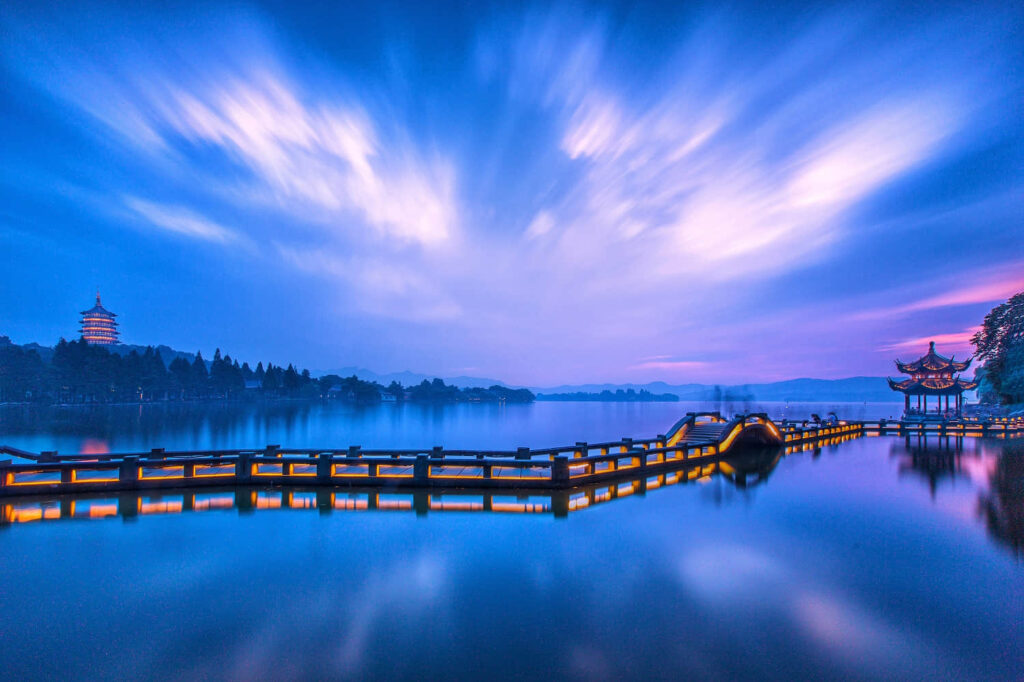
Let’s take a break from the bustling cities and head to Hangzhou, home to the tranquil West Lake. This scenic lake is like a painting come to life, surrounded by mountains on three sides and the city on one. It’s the perfect escape for anyone looking to experience China’s natural beauty and ancient legends.
Why should you visit West Lake? For starters, it’s a feast for the eyes. The lake is dotted with pagodas, stone bridges, and lush gardens, creating a picturesque setting that has inspired poets and artists for centuries.
But West Lake is not just about the views. It’s steeped in history and folklore, including the famous legend of the White Snake, a love story that has been told for generations. You can even ride a boat to some of the lake’s small islands and explore ancient temples and pagodas.
And if you’re up for a day trip, the tea plantations of Longjing Village are just a short drive away. It’s a great opportunity to learn about China’s tea culture and enjoy some of the finest green tea in the country.
So, whether you’re a nature lover, a history buff, or a tea enthusiast, West Lake offers a serene and enriching experience.
Li River and Karst Mountains, Guilin
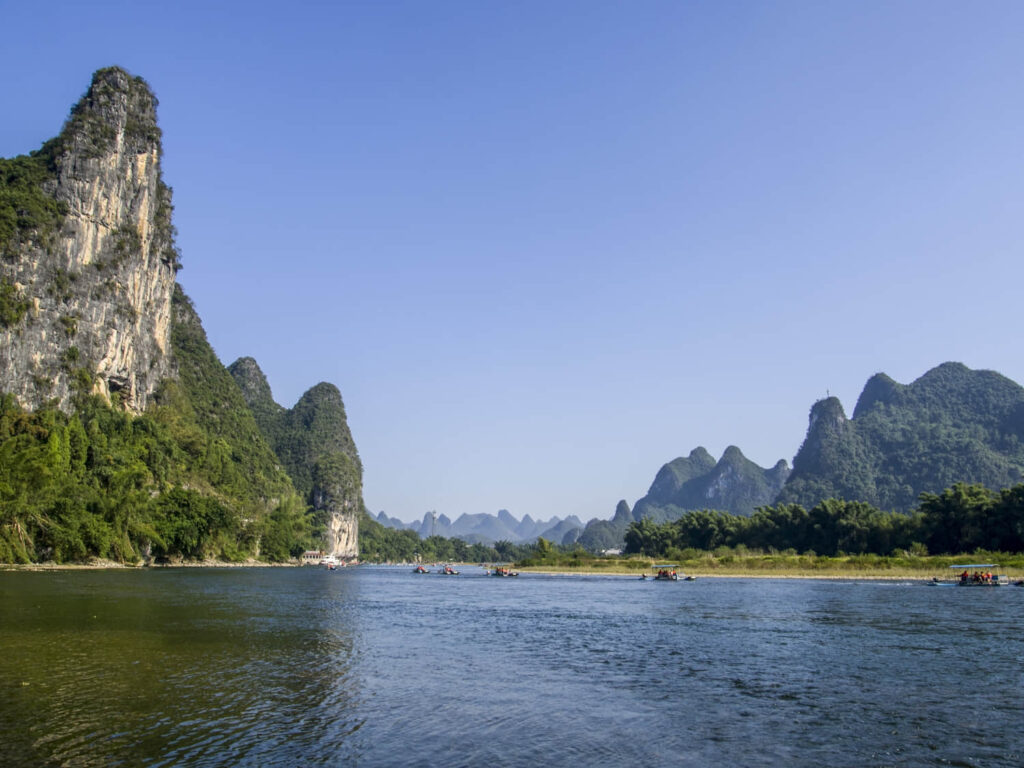
Now, let’s venture south to Guilin, a place that feels like it’s been lifted straight out of a traditional Chinese painting. The Li River, with its winding path through towering karst mountains, offers one of the most surreal and breathtaking landscapes in all of China.
So, why should the Li River and its surrounding karst mountains be on your must-visit list? First of all, the scenery is nothing short of magical. Imagine cruising down the river on a bamboo raft, surrounded by peaks that rise like giant teeth from the water. The reflections in the river create a mesmerizing mirror image that you’ll want to capture from every angle.
But the experience goes beyond just the visual feast. The Li River is the lifeblood of local communities, and a cruise will take you past quaint fishing villages where you can witness traditional methods of fishing, including the use of cormorants. It’s a fascinating blend of natural beauty and local culture.
And let’s not forget about Yangshuo, a charming old town that’s just a boat ride away. Known for its vibrant street markets and outdoor activities like rock climbing and cycling, Yangshuo is the perfect place to extend your Li River adventure.
Terracotta Army, Xi’an
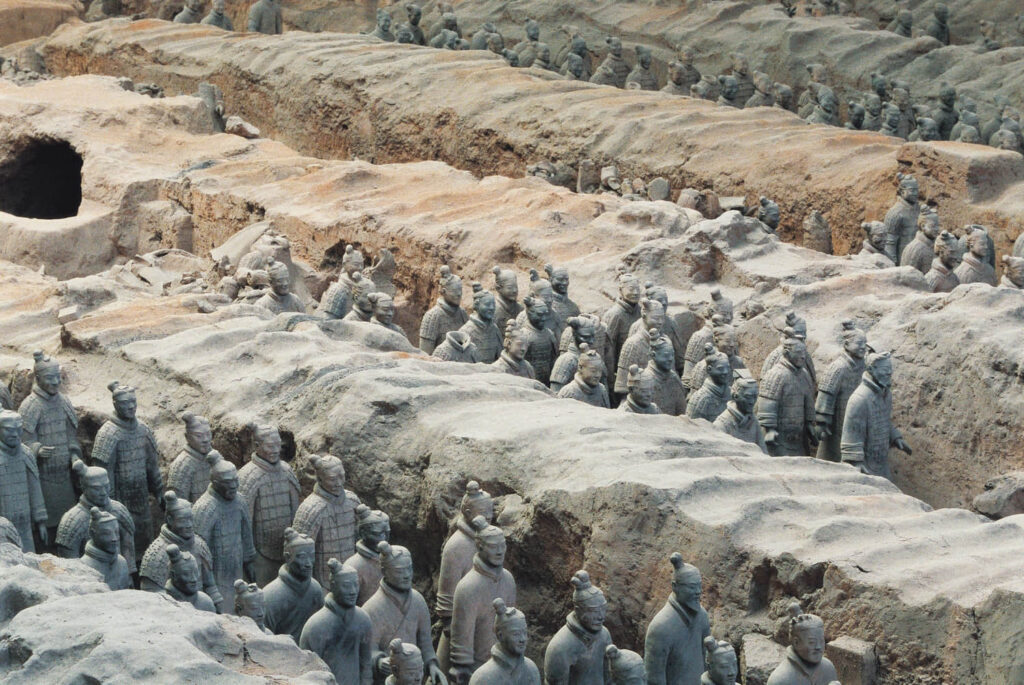
Next on our list is a trip to Xi’an, home to one of the most astonishing archaeological discoveries of the 20th century—the Terracotta Army. Imagine walking into a room and being greeted by thousands of life-sized clay soldiers, horses, and chariots, all arranged in battle formation. It’s a sight that leaves even the most seasoned travelers speechless.
So why visit the Terracotta Army? First, the sheer scale and detail of this ancient army are mind-boggling. Each figure has unique facial features, and the level of craftsmanship is extraordinary. It’s like a snapshot of China’s military history, frozen in time.
But there’s more to it than just the wow factor. The Terracotta Army was built to accompany China’s first emperor, Qin Shi Huang, in the afterlife. It gives us a fascinating glimpse into the beliefs, technologies, and ambitions of ancient China.
Muslim Quarter, Xi’an
After marveling at the Terracotta Army, let’s head back to the heart of Xi’an and explore a different side of the city—the vibrant Muslim Quarter. This bustling area is a melting pot of cultures and a food lover’s paradise.
Why should you visit the Muslim Quarter? First and foremost, it’s a culinary adventure. The streets are lined with vendors selling a variety of mouth-watering treats, from spicy kebabs to sweet pastries. Don’t miss out on trying the famous “roujiamo,” often referred to as the Chinese hamburger.
But it’s not just about the food. The Muslim Quarter is also a hub of history and culture. At its center is the Great Mosque, a stunning blend of Islamic and Chinese architecture that’s been a place of worship for over a thousand years. It’s a peaceful oasis amid the hustle and bustle of the surrounding streets.
The area is also great for shopping, offering everything from traditional crafts to modern gadgets. Whether you’re looking for souvenirs or just want to soak in the atmosphere, the Muslim Quarter has something for everyone.
So, if you’re a foodie, a history buff, or someone who loves exploring diverse cultures, the Muslim Quarter in Xi’an is a must-visit.
Zhangjiajie National Forest Park
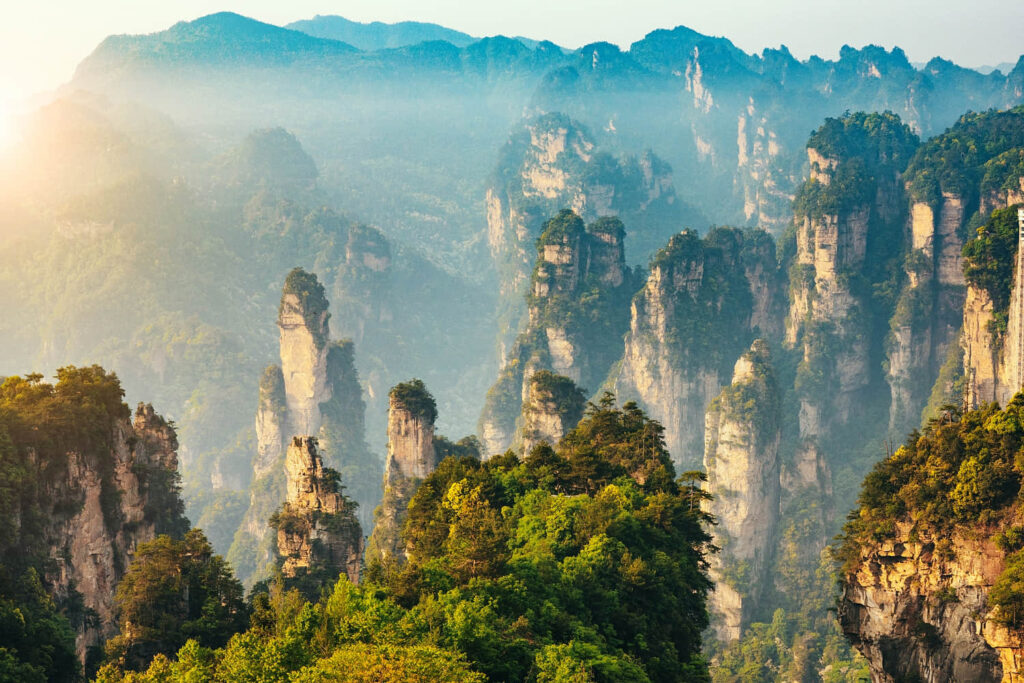
Let’s switch gears and head to a place that looks like it’s straight out of a fantasy movie—Zhangjiajie National Forest Park. If you’ve ever seen the film ‘Avatar,’ you’ll immediately recognize the inspiration behind its floating mountains. This national park is a wonderland of towering sandstone pillars covered in lush greenery, often shrouded in mist for that extra touch of mystique.
So why should Zhangjiajie be on your China itinerary? First of all, the natural beauty is simply out of this world. The park offers a range of hiking trails that take you through its unique landscape, providing countless opportunities for jaw-dropping photos. And for the thrill-seekers, there’s the Zhangjiajie Glass Bridge, the world’s highest and longest glass-bottomed bridge, offering a bird’s-eye view of the stunning scenery below.
But it’s not just about the adrenaline rush or the Instagram-worthy shots. Zhangjiajie also holds cultural significance, featuring in many local legends and myths. It’s a place where you can connect with nature while also diving deep into Chinese folklore.
The best time to visit? Spring and autumn offer the most comfortable weather, but honestly, the park’s beauty shines through in any season.
Potala Palace, Tibet
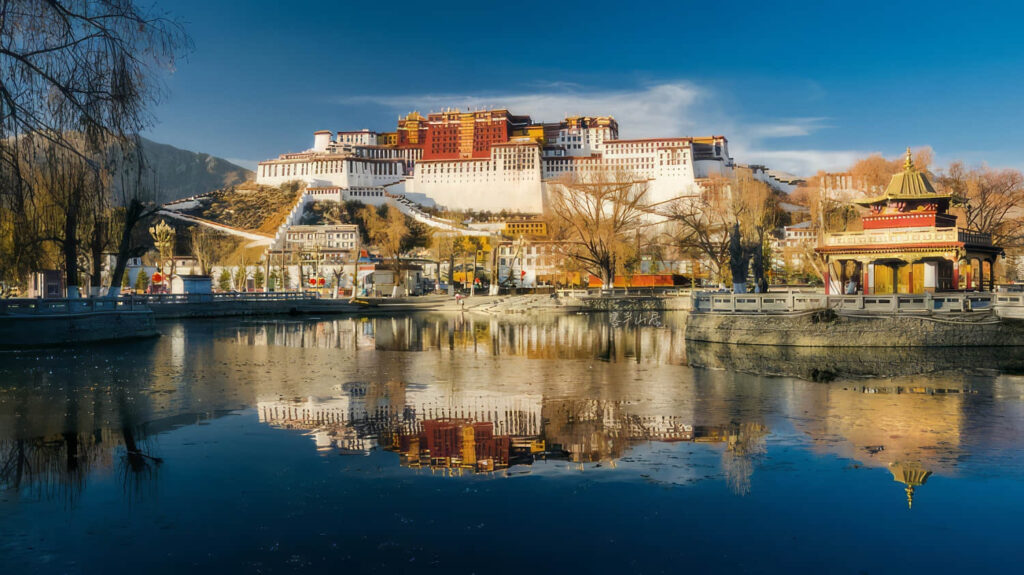
Now let’s journey to the roof of the world—Tibet. Here, standing majestically over the city of Lhasa, is the Potala Palace, a stunning architectural marvel that’s also a spiritual sanctuary. With its towering white and red palaces set against the backdrop of the Himalayas, the Potala Palace is a sight to behold.
So why should you visit the Potala Palace? First off, it’s a spiritual journey. The palace is a significant center of Tibetan Buddhism and was once the winter residence of the Dalai Lama. As you explore its labyrinthine corridors, you’ll encounter intricate murals, sacred scriptures, and countless prayer rooms, each filled with a sense of peace and devotion.
But it’s not just a place of worship. The Potala Palace is also a treasure trove of Tibetan art and history. The Red Palace houses various chapels and mausoleums of previous Dalai Lamas, while the White Palace serves as a living quarters and administrative center.
Visiting the Potala Palace requires a bit of planning due to visitor restrictions and high altitude, but the experience is well worth it. It’s not just a palace; it’s a journey into the heart of Tibetan culture and spirituality.
Yangtze River and the Three Gorges
Let’s set sail on the Yangtze River, the longest river in Asia and the third-longest in the world. But we’re not just talking about any river cruise; we’re talking about a journey through the legendary Three Gorges—Qutang, Wu, and Xiling. These natural wonders offer some of the most breathtaking scenery you’ll ever witness.
So why should you visit the Yangtze River and the Three Gorges? First and foremost, it’s a natural spectacle. Towering cliffs, misty mountains, and deep canyons create a dramatic landscape that’s been the subject of Chinese poetry and art for centuries.
But there’s more to this river journey than just stunning vistas. Along the way, you’ll have the opportunity to visit historical sites like the Shibaozhai Pagoda and the Ghost City of Fengdu, each with its own unique story and cultural significance.
And let’s not forget the engineering marvel that is the Three Gorges Dam, the world’s largest hydroelectric dam. It’s a testament to China’s technological prowess and a sight to behold in itself.
Oriental Pearl Tower, Shanghai
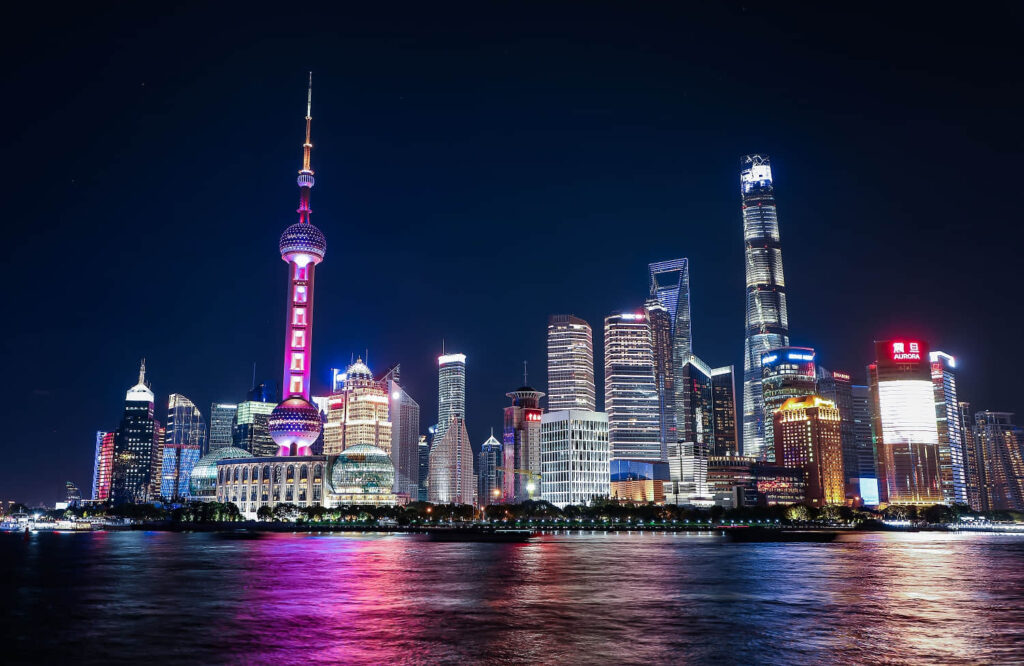
Let’s cap off our journey with a trip to the future—or at least, it’ll feel like it when you’re standing beneath the towering spectacle that is the Oriental Pearl Tower in Shanghai. This iconic structure is one of the tallest TV towers in the world and a symbol of modern China.
So why should you visit the Oriental Pearl Tower? First off, the views are unbeatable. The tower has three observation decks that offer panoramic vistas of Shanghai’s skyline, including the famous Bund and the winding Huangpu River. It’s a photographer’s dream, especially at sunset or during the evening when the city lights up.
But it’s not just about the views. The tower also houses a revolving restaurant, a museum that showcases Shanghai’s history, and even a VR roller coaster for those looking for a thrill. It’s an entertainment hub that offers something for everyone.
Leshan Giant Buddha, Sichuan Province
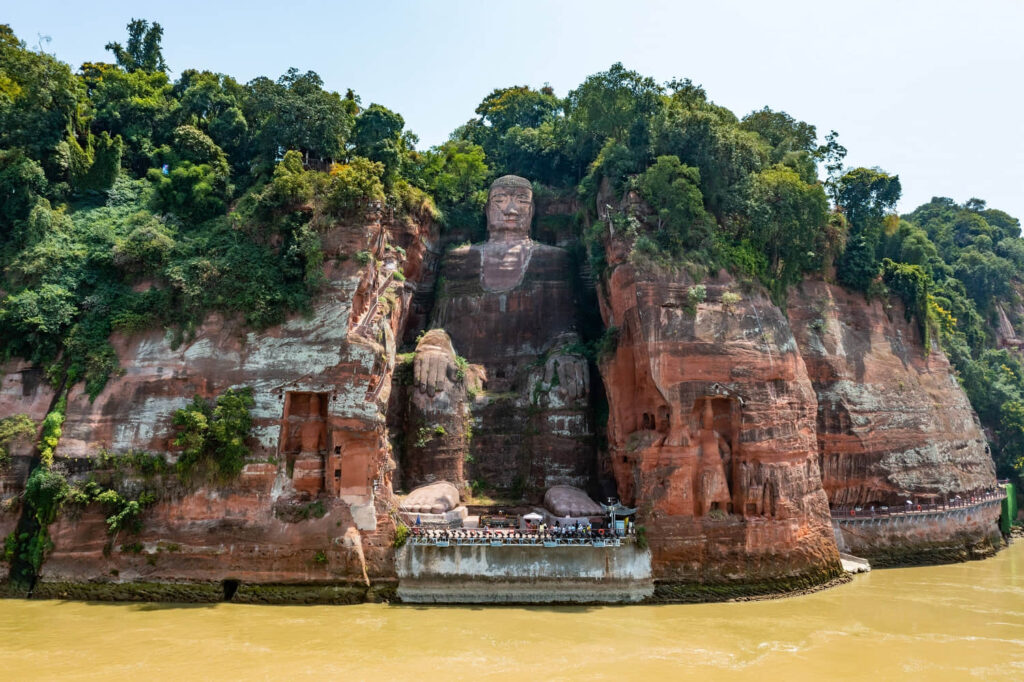
Let’s head to Sichuan Province, where you’ll find the Leshan Giant Buddha, an awe-inspiring statue carved into a cliff face at the confluence of three rivers. Standing at 233 feet, it’s the largest stone Buddha in the world and a testament to the ingenuity and devotion of ancient Chinese craftsmen.
So why should you visit the Leshan Giant Buddha? First of all, the sheer scale of the statue is mind-blowing. You can view it from a boat on the river or climb the stairway built alongside it for a closer look. Either way, the intricate details, from the coiled hair to the elongated ears, will strike you.
But the Leshan Giant Buddha is more than just a monumental sculpture. It’s also a place of spiritual significance, attracting pilgrims and tourists alike. The surrounding area is dotted with various temples and shrines, adding to the site’s religious ambiance.
Jade Dragon Snow Mountain, Yunnan Province

Let’s venture to the mystical lands of Yunnan Province, where the Jade Dragon Snow Mountain awaits. This towering mountain range is a sacred sanctuary, its snow-capped peaks contrasting beautifully with the lush green valleys below. It’s a place that feels like a slice of heaven on Earth.
So why should you visit Jade Dragon Snow Mountain? First off, the natural beauty is simply spellbinding. Whether you’re an avid hiker or someone who just wants to take in the views, the mountain offers a range of trails and cable cars to suit all levels of adventure. Don’t miss the chance to visit Glacier Park, where you can get up close and personal with ancient ice formations.
But it’s not just about the scenic vistas. The mountain is also a cultural hub, home to the Naxi people, an ethnic minority with a rich history and unique customs. You’ll find traditional Naxi villages at the base of the mountain, offering a glimpse into a different way of life.
Getting there is a breeze, with Lijiang serving as the nearest city and a convenient base for your mountain adventure.
Mount Tai, Shandong Province
Next, let’s head north to Shandong Province, where Mount Tai, one of the Five Great Mountains of China, awaits. Revered for centuries as a symbol of stability and strength, this mountain has been a pilgrimage site for emperors, poets, and commoners alike.
So why should you visit Mount Tai? First and foremost, it’s a spiritual journey. The mountain is dotted with ancient temples, stone inscriptions, and pagodas, making it a living museum of Chinese history and spirituality. The hike to the summit is considered a form of spiritual cleansing by many, and the sunrise view from the top is a once-in-a-lifetime experience.
But Mount Tai is not just about spirituality; it’s also a natural wonder. The mountain offers a variety of scenic spots, from tranquil springs to dramatic cliffs, each with its own unique beauty and significance.
Getting to Mount Tai is straightforward, with Tai’an City serving as the gateway. From there, you can either hike up the mountain or take a cable car if you’re short on time or energy.
Whether you’re seeking spiritual enlightenment, a physical challenge, or simply the chance to connect with nature, Mount Tai offers an enriching experience that you won’t soon forget.
Bonus: Lesser-Known Gems
Alright, we’ve covered some of China’s most iconic spots, but what about the hidden treasures that are off the beaten path? Trust us, there are plenty, and they’re well worth the detour.
First up, there’s Pingyao, an ancient walled city that’s like stepping back in time. It’s one of the best-preserved examples of a traditional Han Chinese city, and it’s far less crowded than the more famous tourist spots.
Then there’s the Zhangye Danxia Landform, often referred to as China’s Rainbow Mountains. This geological wonder is a kaleidoscope of colors, and it’s a photographer’s dream.
And let’s not forget about the Harbin Ice Festival, an annual event where entire buildings are made out of ice and illuminated in vibrant colors. It’s a winter wonderland that has to be seen to be believed.
These are just a few examples, but they highlight the incredible diversity and richness of China’s lesser-known attractions. So if you’re the type who likes to venture off the tourist trail, these hidden gems offer a more intimate and unique experience.
Chinese Cuisine You Must Try
Let’s talk food, shall we? A trip to China wouldn’t be complete without diving into its rich culinary landscape. From street food to fine dining, the options are endless, and each region offers its own unique flavors and dishes.
So what should you absolutely try? First off, Peking Duck in Beijing is a must. This dish is all about the crispy skin and tender meat, often served with pancakes and hoisin sauce. It’s a culinary experience you won’t forget.
Then there’s Dim Sum in Guangdong Province, a variety of bite-sized dishes ranging from dumplings to buns and everything in between. It’s perfect for those who love variety and want to try a little bit of everything.
And let’s not forget Sichuan cuisine, famous for its bold flavors and use of chili and Sichuan peppercorns. Dishes like Kung Pao Chicken and Mapo Tofu will leave your taste buds tingling in the best way possible.
But these are just the tip of the iceberg. Each region has its own specialties, and part of the adventure is discovering new favorites along the way.
So, if you’re a foodie or just someone who loves to try new things, Chinese cuisine offers a gastronomic journey like no other.
Best Time to Visit China
So you’re sold on visiting China, but when’s the best time to go? The answer isn’t as straightforward as you might think because China is a vast country with diverse climates and attractions that shine in different seasons.
If you’re looking to explore the Great Wall or bustling cities like Beijing and Shanghai, consider going in the spring (April to June) or autumn (September to November). The weather is generally mild, and you’ll avoid the extreme temperatures of summer and winter.
For nature lovers, the summer months are ideal for places like Zhangjiajie National Forest Park and the Li River, where the landscapes are at their most lush and vibrant. Just be prepared for some rain and high humidity.
Winter, on the other hand, offers its own unique experiences. Think Harbin’s Ice Festival or skiing in the northern regions. Plus, it’s the perfect time to enjoy some hot pot!
But here’s a pro tip: Try to avoid major Chinese holidays like Chinese New Year and National Day (early October), as popular destinations can get incredibly crowded.
In short, the best time to visit really depends on what you want to see and do. So plan accordingly, and you’re in for an unforgettable trip!
Conclusion
Wow, what a journey we’ve been on, right? From the awe-inspiring Great Wall to the tranquil West Lake and from the bustling streets of the Muslim Quarter to the serene heights of Mount Tai, China is a land of endless wonders. Whether you’re a history buff, a nature lover, or a foodie, there’s something here for everyone.
But let’s be real; this list barely scratches the surface. China is a vast and diverse country, and each destination offers its own unique experiences, stories, and flavors. The real magic happens when you step off the beaten path and explore what lies beyond the tourist brochures. Trust us, you won’t be disappointed.
So, are you ready to pack your bags and set off on your own Chinese adventure? We hope this guide has inspired you to do just that. And remember, the best time to visit is whenever you can make it happen. So go ahead, start planning your trip, and prepare to be amazed.
